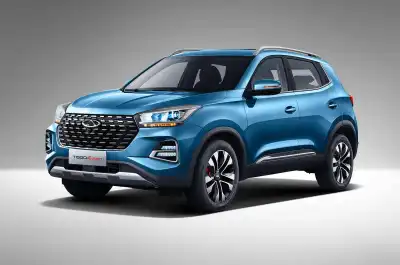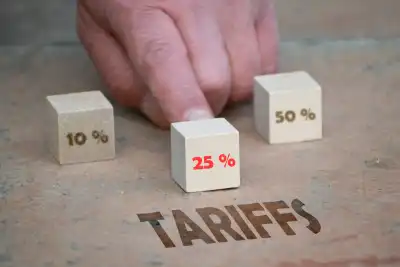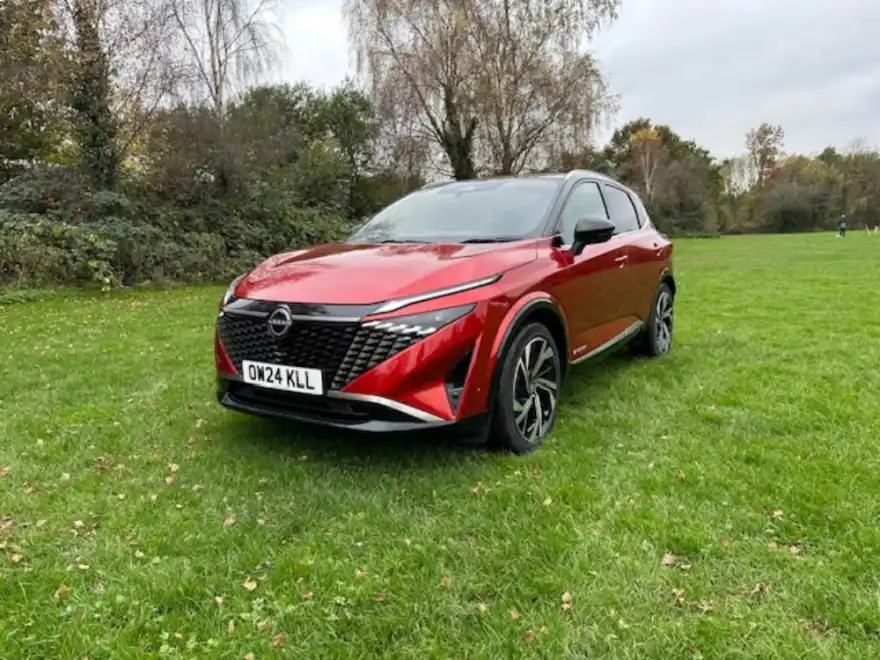
If you’re in the market for a top quality family SUV, two very big hitters certainly stand out from the crowd and they are the Nissan Qashqai and Hyundai Tucson.
Both models have seen some change in 2024 with the Qashqai being given a third-generation revision with a number of cosmetic enhancements, improved infotainment system and upgraded upholstery.
Meanwhile, the Tucson has also been given a mid-generation face-lift with more eye-catching design cues, a revised dashboard layout with snazzy twin-screens and improved functionality.
The Qashqai was first launched back in 2006 and in 2022, its popularity was proven beyond doubt as it went on to become Britain’s best-selling car. And it still continues to enjoy excellent sales success.
Qashqai customers can choose from a range of trim levels to suit all needs and budgets with prices starting from just over £30k and this includes an all-new N-Design grade.

In addition, the Qashqai is sold with mild hybrid technology which sees a petrol engine supported by a battery during acceleration or e-POWER which uses a combination of petrol engine which charges the battery and an electric motor that turns the wheels.
Hyundai launched the Tucson back in 2004 and is also currently in its third generation. And, like the Qashqai, there is plenty of choice for would-be customers with trim levels called Advance, Premium, N Line, N Line S and Ultimate. Based around a 1.6-litre engine, there is a pure petrol version, mild hybrid and plug-in hybrid variant to choose from with the entry-level car featuring a six-speed manual gearbox, while the rest of the range has a fully automatic gearbox. Similarly to the Qashqai, the Tucson starts from £32k (OTR).
We put these two models through their paces in back-to-back week-long test drives in an attempt to split them. We explored costs, performance, practicality and efficiency, but it’s no easy task separating them and may come down to badge preference at the end of the day.
We selected the Nissan Qashqai Tekna+ e-POWER 2WD model costing £42,980 and the Hyundai Tucson Ultimate hybrid 2WD version priced at £40,325 for our comparison exercise.
Price, tech and Performance
The 2024 Nissan Qashqai is priced from £30,135 for the entry-level Acenta Premium with the N-Connecta version costing £32,305, the N-Design £34,845, Tekna £34,845 and range-topping Tekna+ from £38,875.
We tested the top-of-the-range Qashqai Tekna+ model with e-POWER technology and two-wheel-drive, priced at £42,980 (OTR), although the rather splendid Fuji Sunset Red two-tone paintwork added a further £745 to the bill.
The car was powered by a 1.5-litre, three-cylinder petrol-electric engine delivering 254hp and 330Nm of torque. That translates into a 0-62mph sprint time of 7.9 seconds and a top speed of 105mph.
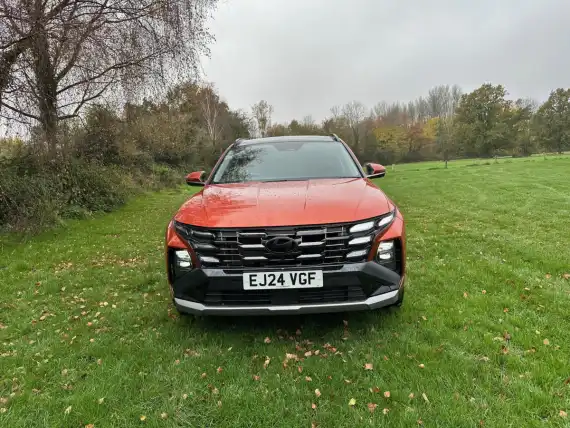
Performance-wise, the Qashqai is quick out the blocks and there is always plenty of power on tap to overtake slower-moving traffic. Thanks to the unique e-POWER system that uses a petrol engine and lithium ion battery to power an electric motor, it means it is the electric motor alone that drives the wheels. So, at times the Qashqai responds similarly to an EV with instant torque.
The automatic transmission is smooth enough, provided you don’t floor the accelerator. Do that and you will be met with a screaming sound and very little sign of oomph! But drive with a little TLC and the car is beautifully smooth with impressive balance and grip on twisting B roads. It is a comfortable motorway cruiser. And in busy town centres, the driver visibility is excellent and there are drive modes called Standard, Eco and Sport that alter the characteristics of the vehicle.
In addition, there is a Standard or EV mode to maximise efficiency in stop-and-go traffic and the Park Assist set-up will make you look an expert when squeezing into tight parking spaces.
A panoramic glass sunroof lets light flood into the cabin and there is a wealth of on-board tech to explore within the latest Qashqai. There are twin 12.3-inch screens with the main infotainment one offering access to the many creature comforts, such as a pitch perfect 10-speaker Bose sound system, full smartphone connectivity, sat nav, a 3D around-view monitor and lots more besides.
The second screen shows all the vital driving data and this is also clearly viewed on a head-up display in the driver’s eye-line. Special mention to the separate panel for the climate settings – there is nothing worse than having to navigate over-complicated touchscreen menus simply to increase the cabin temperature a notch.
When it comes to the Hyundai Tucson, the line-up starts at £32,000 for the Advance model with 160PS and a six-speed manual gearbox. Premium and N-Line grades both cost from £34,500, N-Line S and Ultimate from £37,000, with the plug-in hybrid car featuring AWD in either N-Line S or Ultimate proving the most expensive at £46,475.
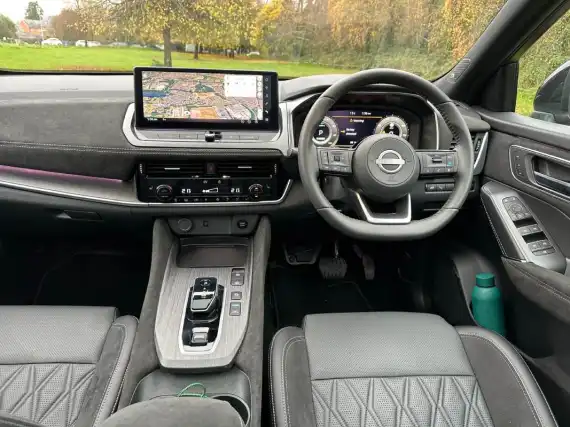
All cars are based on a 1.6-litre engine with various power outputs and our test model, costing £40,325, had a turbocharged unit delivering 215PS and 367Nm of torque. It could reach 62mph from a standing start in 8.2 seconds and maxed out at 116mph.
The Qashqai feels faster off the mark, but the Tucson boasts a far smoother automatic transmission resulting in a more rewarding driving experience when faced with the open road.
Once again, the all-round visibility is excellent and the driver can flick between two modes called Eco and Sport to alter the handling slightly. There are also paddles to take extra control over the gear changes on the Tucson which we liked.
Similarly to the Qashqai, the panoramic roof helps create a bright cabin environment. And there is plenty of on-board tech to explore, most of which is accessed via the smart 12.3-inch infotainment screen. There is a nine-speaker KRELL sound system, sat nav, smartphone integration and a clear 12.3-inch driver display. Again, we applaud the sperate panel for all the climate control settings.
It is difficult to separate the two models. The Qashqai looks sportier in its design and feels sharper to drive, but the Tucson has the superior gearbox. Other than that, they are both very alike in their costs, handling and on-board equipment levels.
Practicality
Both the Nissan Qashqai and Hyundai Tucson have built solid reputations for their practicality over the years.
The Qashqai stretches 4,425mm long, 1,835 wide (excluding mirrors) and 1,625mm tall. Powered quilted leather seats with memory settings are a bonus, especially if the vehicle is shared between drivers and the Qashqai offers the added luxury of massaging front seats, and these, along with the steering wheel, can also be heated against the chill.
The boot is accessed via a powered tailgate and can accommodate 436 litres of kit, which is less than other Qashqai versions due to the Bose sound system’s amplifier. It also has luggage boards that are handy to separate items in the boot and prevent shopping rolling around. The capacity can be increased to 1,447 with the 60:40 split-folding rear seats dropped flat.
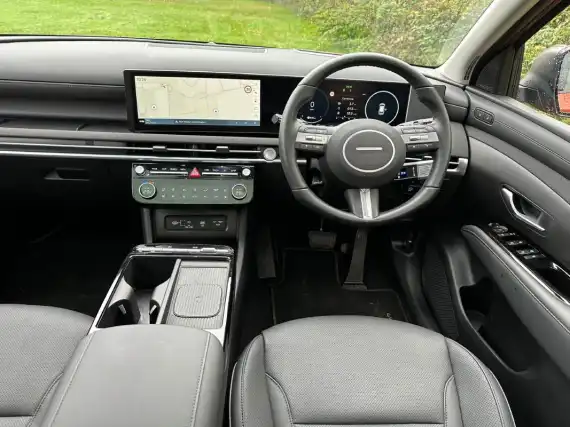
Throughout the cabin, there are front and rear cup holders, a glovebox, charging pad, central cubby with additional tray, door bins with storage for a bottle, seat back pockets and some trays.
There is bundles of space up front for a couple of six footers to sit comfortably and a further two can fit in the back if the front seats are not pushed too far back. Ideally, it is perfect for a trio of youngsters though.
There are Isofix child seat anchors to the outer rear seats, and with family adventures in mind, the Qashqai can tow a 750kg trailer.
The Hyundai Tucson is slightly larger than the Qashqai at 4,520mm in length, 1,865mm across (excluding mirrors), and 1,665mm tall. And it boasts seats that are powered, can be heated or ventilated, has a heated steering wheel and also heated outer rear seats.
The boot, also accessed via a powered tailgate, can swallow 616 litres of luggage, increasing to 1,795 litres with the 40:20:40 split-folding rear seats folded flat. This is superior to the Qashqai and it also has numerous storage options throughout the cabin, including a glovebox, door bins with space for a bottle, a deep central cubby, seat back nets, front and rear cup holders, plus lots of space beneath the centre console.
Back seat space is perfect for three youngsters or a couple of adults and, the Tucson can tow a trailer weighing up to 1.36 tonnes (braked)
Again, both the Qashqai and Tucson cover the practicality bases well making it nigh on impossible to separate the two models. The Tucson is more spacious so would cope better with the needs of a family who don’t like to pack lightly!
Efficiency
Efficiency is an important factor when selecting a new car these days. With the cost of living constantly on the rise, making savings elsewhere is often a priority.
The Nissan Qashqai featuring clever e-POWER technology, could deliver a combined 53.3mpg with carbon emissions of 119g/km under WLTP testing. By comparison, the Hyundai Tucson could achieve a combined 49.6mpg with emissions of 129g/km.
Again similar figures, although the Qashqai proves slightly more economical to run.
So, which takes your fancy?
So, how do you choose between two exceptionally good vehicles that deliver on all counts? Both cars look modern and upmarket in their design with the Tucson featuring a very distinctive lighting signature.
And both cars have a wealth of on-board technology that is both user-friendly and bang up to date.
We preferred the transmission set-up on the Tucson, but both cars are super-easy to drive and offer good levels of practicality and passenger comfort.
With the option of plug-in hybrid technology on the more expensive models, the Tucson can deliver 256mpg, but that would only ever be achievable if the vehicle was plugged in regularly to top up the battery. However, this model would bring financial savings to any business driver.
All in all, it’s difficult to separate these two A listers in the compact SUV sector. Sales figures would suggest the Nissan is the most popular, but the Tucson is a very competent competitor. Our advice, test drive them both before signing in the dotted line.

